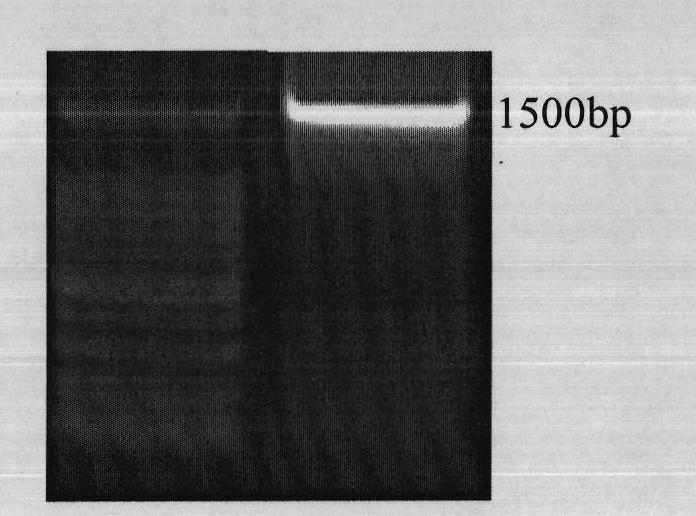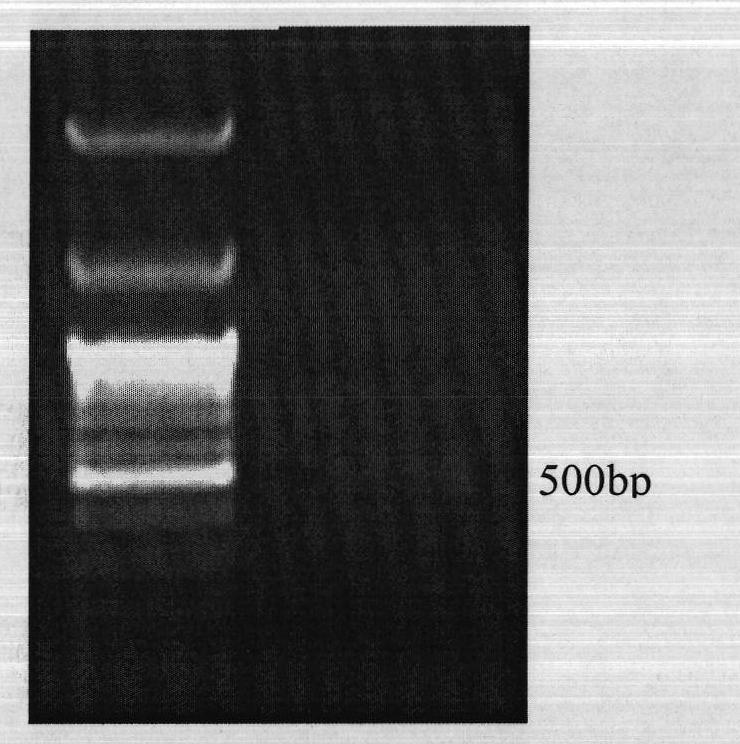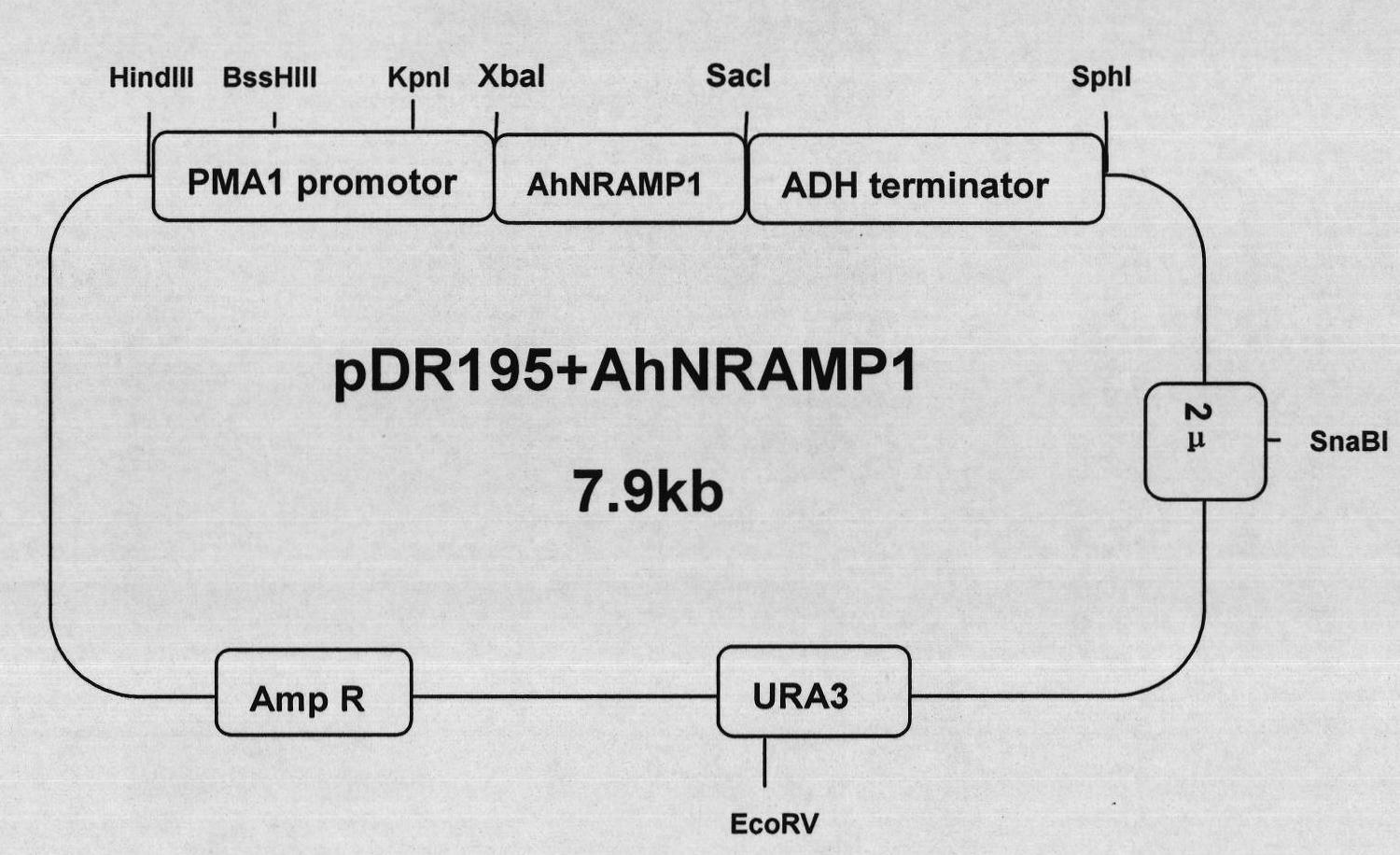Peanut ferrous transport protein as well as encoding gene and application thereof
A peanut and protein technology, applied in the fields of application, genetic engineering, plant gene improvement, etc., to achieve the effect of improving utilization efficiency and large application prospects
- Summary
- Abstract
- Description
- Claims
- Application Information
AI Technical Summary
Problems solved by technology
Method used
Image
Examples
Embodiment 1
[0025] Peanut seeds 'Luhua 14' (purchased from the Chinese Academy of Agricultural Sciences) were sterilized with 10% hydrogen peroxide for 20-30 minutes, cleaned and placed in saturated calcium sulfate solution for about 8 hours, while ventilating and avoiding light, and then placed on the floor Put them in a tray of absorbent paper, and cover them with several layers of absorbent paper. After pouring an appropriate amount of water, place them in an artificial culture room away from light. The culture room was set at 30°C for 14 hours with light and 22°C for 10 hours with darkness. About 1-2 days after the peanuts germinate, they are transferred to quartz sand for cultivation, and after 1-2 leaves grow, they are transferred to hydroponic nutrient solution for cultivation. The formula of hydroponic nutrient solution is as follows: KH 2 PO 4 (0.5mM), K 2 SO 4 (0.75mM), KCl(0.1mM), MgSO 4 .7H 2 O(0.65mM), CaSO 4 .2H 2 O(2mM), H 3 BO3 (1μM), MnSO 4 .4H 2 O(1μM), ZnSO ...
Embodiment 2
[0027] Put the peanut root and leaf samples that have been stored in a -80 degree refrigerator into a mortar that has been pre-cooled with liquid nitrogen, add liquid nitrogen to quickly grind the plant samples until they become powdery, take out about 0.1 grams of powder samples in 1.5 ml 1 ml of RNA extraction solution Trizol (purchased from Invitrogen) was quickly added to the RNase-free centrifuge tube. Immediately shake the mixture of the sample and Trizol vigorously with a vortex shaker for about 15 seconds to fully dissociate the nucleoprotein, let stand at room temperature for 5 minutes, add 200 microliters of chloroform, mix well, let stand for 5 minutes, put Centrifuge at a speed of 12,000×g for 15 minutes in a centrifuge that has been pre-cooled to 4°C in advance, take the supernatant into a new 1.5 ml centrifuge tube, add 500 μl of isopropanol, mix well by inverting up and down, and store at room temperature. Stand for 10 minutes, then centrifuge at 12,000×g at 4°C...
Embodiment 3
[0029] Using CLONTECH PCR-Select TM The cDNA Subtraction Kit (purchased from Clontech Company) was used to carry out inhibitory subtractive hybridization with peanut root samples in peanut monoculture and peanut / corn intercropping. The specific steps are detailed in the kit manual, and a 490bp peanut AhNRAMP1 gene fragment was obtained.
[0030] Primers were designed with known fragment sequences, peanut root RNA was used as template, and Super ScriptII reverse transcriptase kit from Invitrogen Company was used, Oligo(dT)15 was used as primer, and reverse transcription cDNA template was obtained by reacting at 42°C. Through Clonetech company RACE kit (SMART TM RACE cDNA Amplification Kit) was used for PCR reaction, respectively cloned and sequenced to obtain the 5' and 3' ends of the AhNRAMP1 gene (see the kit instructions for methods). The 5' end cloning primers are:
[0031] AhNRAMP-5’-GSPGCCAATCCACGAAGGCAGTGATGAGG
[0032] The 3' end cloning primer is
[0033] AhNRAMP...
PUM
 Login to View More
Login to View More Abstract
Description
Claims
Application Information
 Login to View More
Login to View More - R&D
- Intellectual Property
- Life Sciences
- Materials
- Tech Scout
- Unparalleled Data Quality
- Higher Quality Content
- 60% Fewer Hallucinations
Browse by: Latest US Patents, China's latest patents, Technical Efficacy Thesaurus, Application Domain, Technology Topic, Popular Technical Reports.
© 2025 PatSnap. All rights reserved.Legal|Privacy policy|Modern Slavery Act Transparency Statement|Sitemap|About US| Contact US: help@patsnap.com



